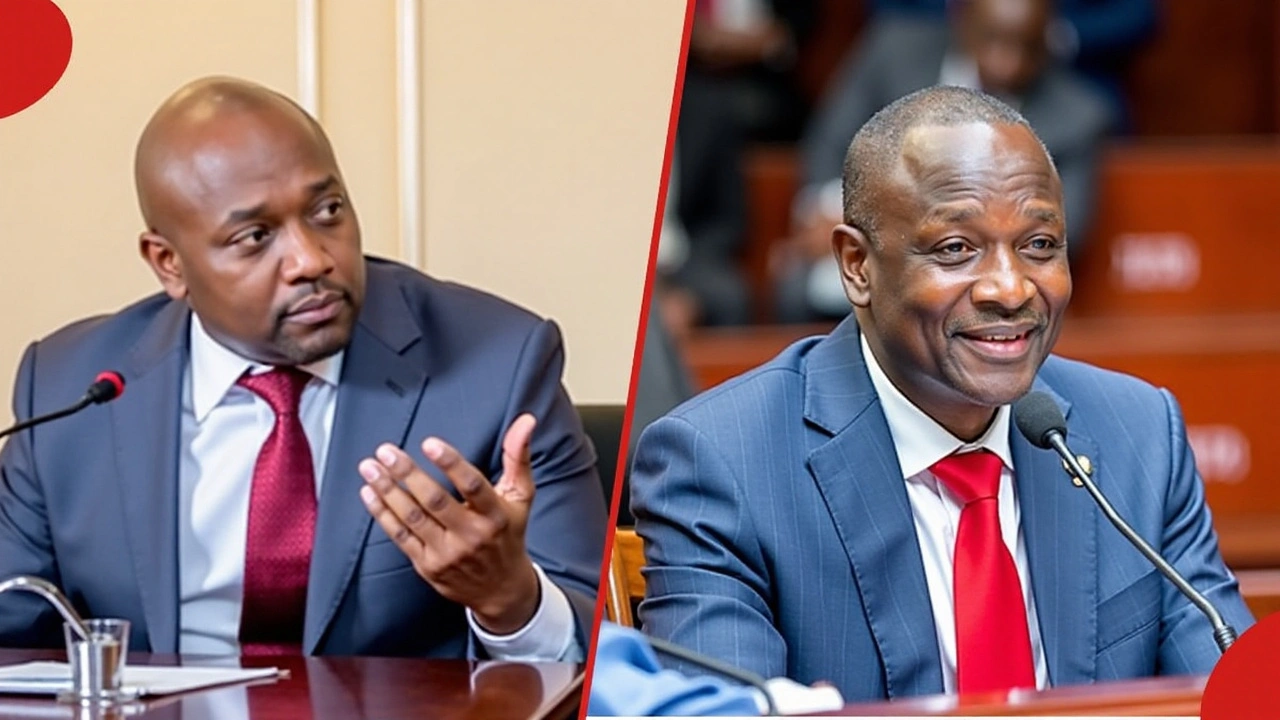
Moses Kuria Warns Kenyan Shilling Could Plummet to Record Low
Former Cabinet Secretary Moses Kuria has sounded an alarm that the Kenyan Shilling could drop to an unprecedented low of KSh 170 against the US dollar. This potential downturn signifies more than just a slump in currency value; it reflects deeper, systemic issues within Kenya's economy that demand urgent intervention from policymakers.
A Closer Look at Economic Imbalances
The prediction by Kuria underscores the ongoing and persistent challenges that have plagued Kenya's economy. One of the key factors contributing to the declining value of the Shilling is Kenya's substantial reliance on imports. A high import bill, coupled with a stagnant manufacturing sector, creates an economic imbalance that puts tremendous pressure on the local currency.
Kenya's current account deficit exacerbates this situation, creating a scenario where the economy spends more on foreign goods and services than it earns from exports. This negative trade balance depletes Kenya's foreign exchange reserves, leading to a weaker Shilling. When a country imports more than it exports, it must pay for these imports in foreign currency, often leading to an increased demand for foreign currency like the US dollar.
Impact of Inflation and Investor Confidence
The declining value of the Shilling is also tied to the high inflation rates currently affecting the country. As inflation rises, the purchasing power of the Shilling decreases, making goods and services more expensive domestically. This not only erodes the benefits that might come from a weaker exchange rate but also fuels a vicious cycle of price increases that further destabilize the economy.
High inflation rates create uncertainties across the economic landscape, making investors wary. The risk of quick devaluation means that foreign and local investors alike risk losing the value of their investments, leading them to seek safer havens. This reduced investor confidence then leads to lower capital inflows, creating another layer of difficulty in stabilizing the Shilling.
Structural Weaknesses and Need for Policy Action
Kenya's economic landscape is beset with structural weaknesses that need to be addressed to stabilize the Shilling. The heavy dependency on imports is not just an issue of economic imbalance, but also a signal of an underperforming domestic manufacturing sector. To rebalance the economy, there must be a concerted effort to grow local industries, reduce import dependence, and increase export capacity.
Kuria's warning serves as a call to action for policymakers. There’s an urgent need for structural reforms to enhance the productivity and competitiveness of the local manufacturing sector. This could involve providing incentives for local production, investing in infrastructure, and creating a favorable business environment for both local and foreign investors.
Broader Economic Context and International Pressures
Kenya’s economic woes are not isolated but are connected to broader international economic pressures. The global economic environment is characterized by volatility in short-term capital flows, trade tensions, and varying commodity prices. These factors have a direct impact on small economies like Kenya’s, making it even more critical for the country to build robust economic resilience.
International economic pressures, such as changes in US interest rates, can also influence the value of the Kenyan Shilling. For instance, when the US Federal Reserve raises interest rates, it attracts capital flows towards the US, leading to a strengthening of the dollar against other currencies, including the Kenyan Shilling.
The Way Forward
In conclusion, Kuria’s warning about the potential drop of the Kenyan Shilling to KSh 170 per US dollar is a stark reminder of the vulnerability of Kenya's economic structure. It is imperative for policymakers to take swift and decisive actions to address the underlying issues. This includes tackling the high dependence on imports, revitalizing the manufacturing sector, and implementing measures to control inflation.
Stabilizing the economy will require a multi-faceted approach, incorporating both immediate and long-term strategies. By enhancing local production capacities and reducing the current account deficit, Kenya can create a more balanced and resilient economy. Such efforts would not only stabilize the Shilling but also restore investor confidence and lay the groundwork for sustainable economic growth.
Therefore, the future of the Kenyan Shilling and the broader economy hinges on the political will to implement necessary reforms and the collective effort of all stakeholders involved. The time to act is now, to prevent a potential currency crisis and to secure a stable economic future for Kenya.